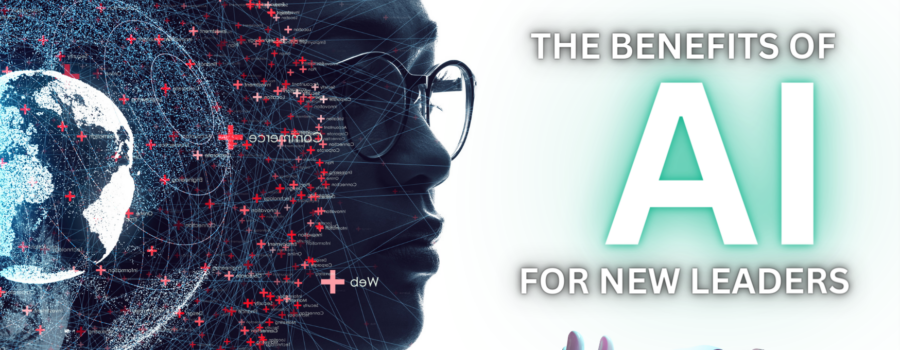AI’s emergence has profoundly transformed the workplace; tasks that were once performed manually are now automated. From customer service chatbots to self-driving cars, the influence of artificial intelligence (AI) is undoubtedly profound and undeniable.
As we stand on the cusp of a new era, AI is revolutionizing the way we live, work, and interact. As the world continues to evolve and embrace digital transformation, new leaders in business are not left out of the loop. In fact, the impact of AI is particularly profound when we consider its implications for leadership roles. How will this flourishing technology influence the responsibilities of new leaders? What changes will it introduce to the traditional paradigms of leadership, decision-making, and team dynamics? These probing questions underscore the need to delve into the profound shifts AI is catalyzing and to explore how new and transitioning leaders can navigate this uncharted terrain.
AI’s influence on decision-making processes is one of the most prominent facets of its societal impact. The ability of AI systems to analyze vast amounts of data swiftly and accurately provides leaders with unprecedented insights.
How will leaders grapple with the integration of AI-driven decision-support tools?
As organizations increasingly embrace artificial intelligence, new leaders must consider innovative strategies to leverage these tools effectively. They can foster a culture of collaborative decision-making that integrates human expertise with AI insights. Rather than viewing AI as a replacement for human decision-makers, it should be seen as a valuable collaborator. Encouraging open communication and feedback between human and AI contributors can lead to more robust decision outcomes.
Moreover, nurturing a mindset of adaptability will allow them to understand the capabilities of AI tools,
enabling them to integrate new features and functionalities that align with the organization’s goals. Take
the example of a healthcare organization using AI to process patient data. Here, leaders must ensure the
utmost confidentiality and security, avoiding breaches that could have dire consequences. Establishing
clear guidelines and transparent practices regarding AI usage ensures that decisions align with
organizational values and ethical standards.
As AI augments decision-making, it prompts a reevaluation of leadership strategies, emphasizing the
importance of a symbiotic relationship between human intuition and machine precision.
Efficiency and time management represent another transformative arena where AI is leaving an
indelible mark. New leaders must consider workflow optimization and streamline tasks with the aid of
AI. This involves identifying tasks where AI excels in efficiency and routine processes, allowing human
workers to focus on higher-order thinking, creativity, and complex problem-solving.
Let’s admit it: while AI excels at efficiency and data processing, human ingenuity remains unparalleled in
innovation and creativity. Leaders should create environments that nurture and reward creativity,
empowering employees to explore novel solutions, think critically, and contribute fresh perspectives
that AI may not inherently possess. The convergence of these AI technologies with leadership
responsibilities demands an exploration of the organizational structures and management styles that
will thrive in this dynamic landscape.
As AI becomes a linchpin in the realm of data-driven insights, the role of leaders extends beyond
traditional decision-makers to data interpreters. The question arises: How are you going to adapt to this
shift, embracing the role of data-driven strategists who draw profound insights from AI-generated
analytics? The ability to derive meaningful narratives from data and translate them into actionable
strategies will undoubtedly become a hallmark of successful leadership in the age of AI.
In this era of rapid technological advancement, the impact of AI on leadership goes beyond task
optimization and data analysis. AI is transforming the very nature of communication within leadership
teams, fostering collaboration, and enhancing the effectiveness of information exchange. Leaders must
grapple with how to navigate these changes, ensuring that the integration of AI tools enhances, rather
than hinders, the human elements of leadership, such as empathy, inspiration, and vision.
The essence of innovation lies in creative problem-solving. By taking elements that already exist in your
workplace and reconfiguring them in novel ways, you seize opportunities and create solutions that have
a lasting impact. Leaders that can creatively combine market insights, customer needs, and
technological capabilities gain a competitive edge in today’s fast-paced business environment.
Do you find echoes of your own experiences in this blog? Are you looking for support to navigate similar
challenges? We’re here to assist you on your path. If you’re aspiring to be a transformative leader, I
invite you to book a complimentary call with me here: bit.ly/3kD7oEC. Let’s explore how you can
harness your potential and lead with impact in this AI era.

